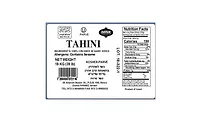EU Countries Report Salmonella Illnesses From Imported Tahini, Halva

Five European Union countries have reported Salmonella infections with some linked to Syrian tahini and halva.
Since 2019, up to 80 people may have been affected in Germany, Sweden, Norway, Denmark, and the Netherlands. Many types of Salmonella have been linked to the outbreak, including S. Mbandaka, S. Havana, S. Amsterdam, and S. Orion.
Germany has 51 patients related to the outbreak, with 49 confirmed by whole-genome sequencing (WGS) plus two with an epidemiological link to a WGS-confirmed case. This includes 21 in 2019, 12 in 2020, and 18 in 2021.
Officials from the Robert Koch Institut in Germany said they initially saw an increase in S. Havana case numbers in 2019 but weren't able to identify the source of infection. These patients have been retrospectively linked to the current outbreak based on the WGS results. WGS provides "fingerprints of bacteria" and helps identify matches between patients and specific pathogens.
Reported illness onset dates vary from January 2019 to May 2021. There are a few possible cases with onset dates from June 2021, which are not yet WGS-confirmed. The age of cases ranges from 6 months to 69 years, and 53 percent are female. The consumers involved in the cases live across Germany in 15 of 16 federal states.
Source: Food Safety News
Looking for quick answers on food safety topics?
Try Ask FSM, our new smart AI search tool.
Ask FSM →








